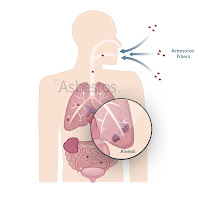Smokers are more likely to get cancer than non-smokers. This is particularly true of lung cancer, throat cancer and mouth cancer, which hardly ever affect non-smokers.
The link between smoking and lung cancer is clear.
Ninety percent of lung cancer cases are due to smoking.
If no-one smoked, lung cancer would be a rare diagnosis – only 0.5 per cent of people who've never touched a cigarette develop lung cancer.
One in ten moderate smokers and almost one in five heavy smokers (more than 15 cigarettes a day) will die of lung cancer.
The more cigarettes you smoke in a day, and the longer you've smoked, the higher your risk of lung cancer. Similarly, the risk rises the deeper you inhale and the earlier in life you started smoking.
For ex-smokers, it takes approximately 15 years before the risk of lung cancer drops to the same as that of a non-smoker.
If you smoke, the risk of contracting mouth cancer is four times higher than for a non-smoker. Cancer can start in many areas of the mouth, with the most common being on or underneath the tongue, or on the lips.



